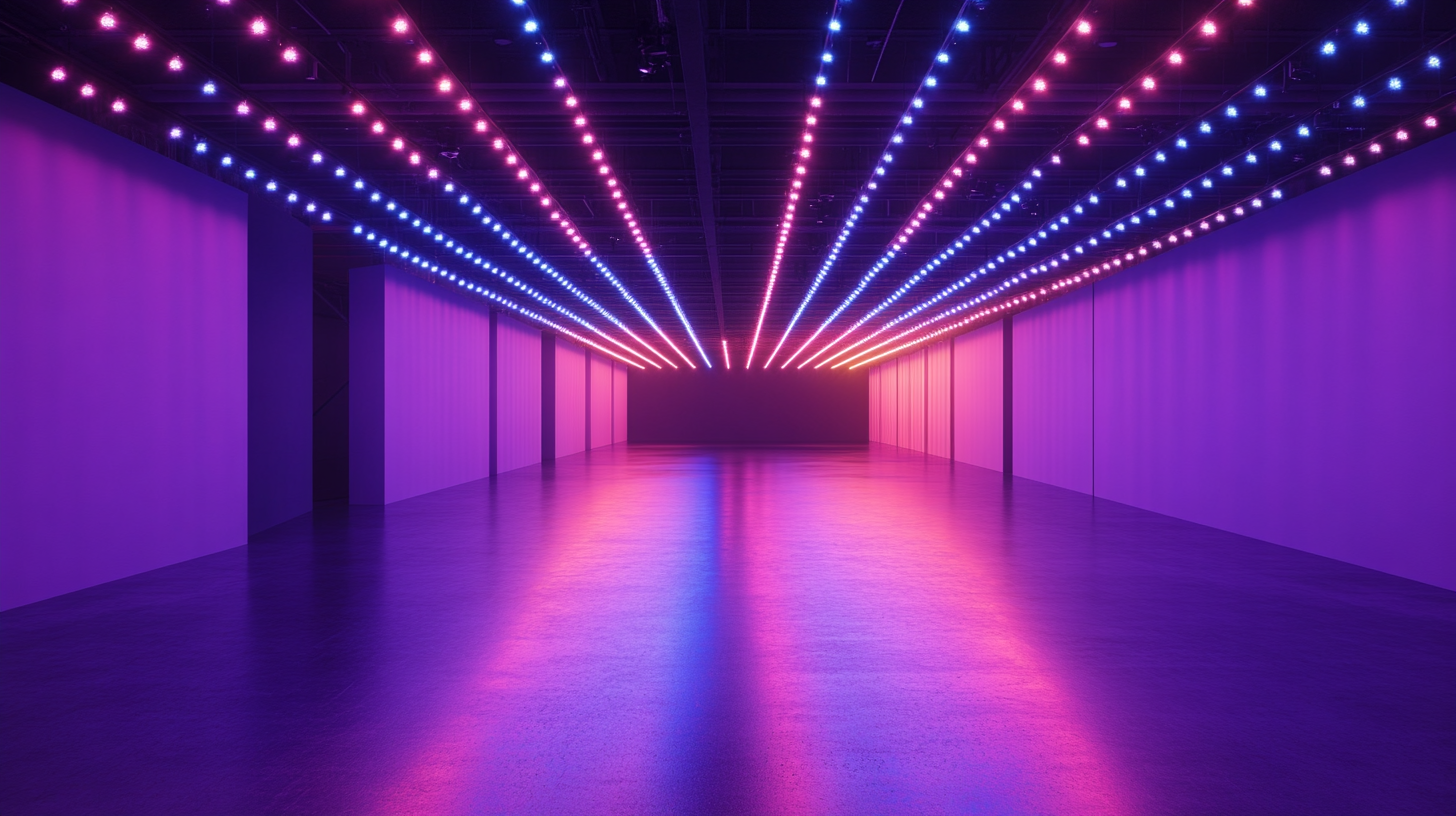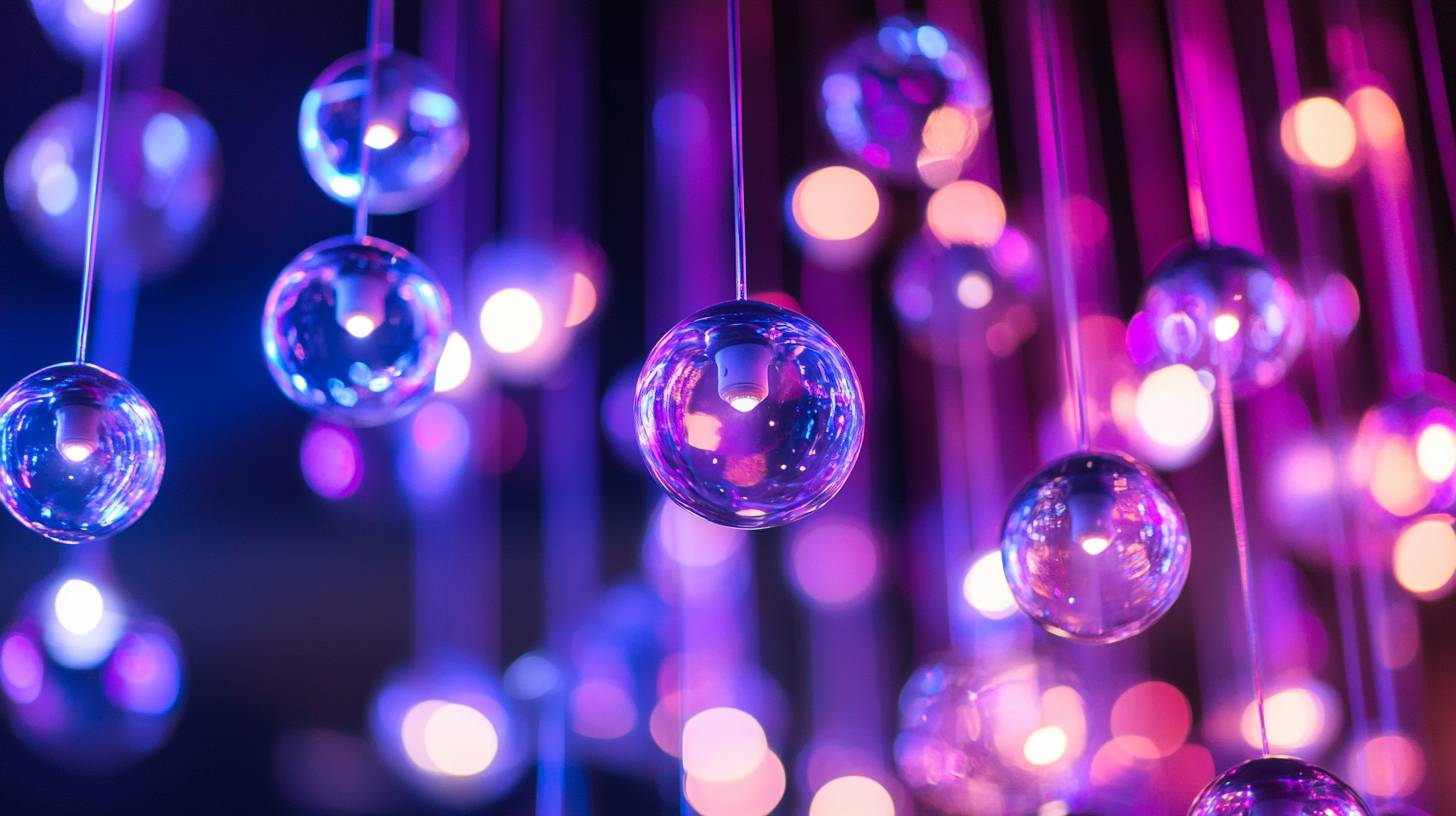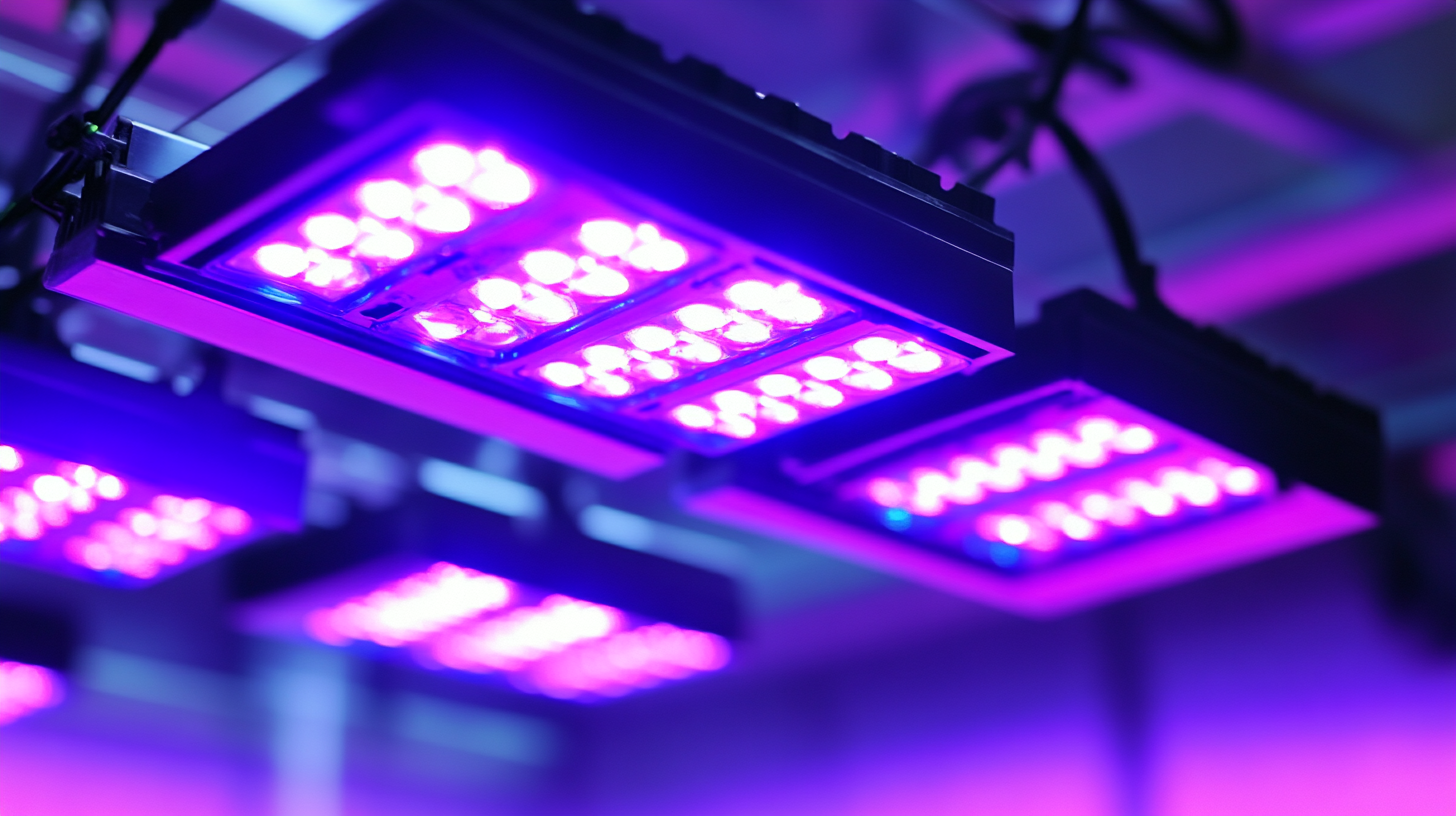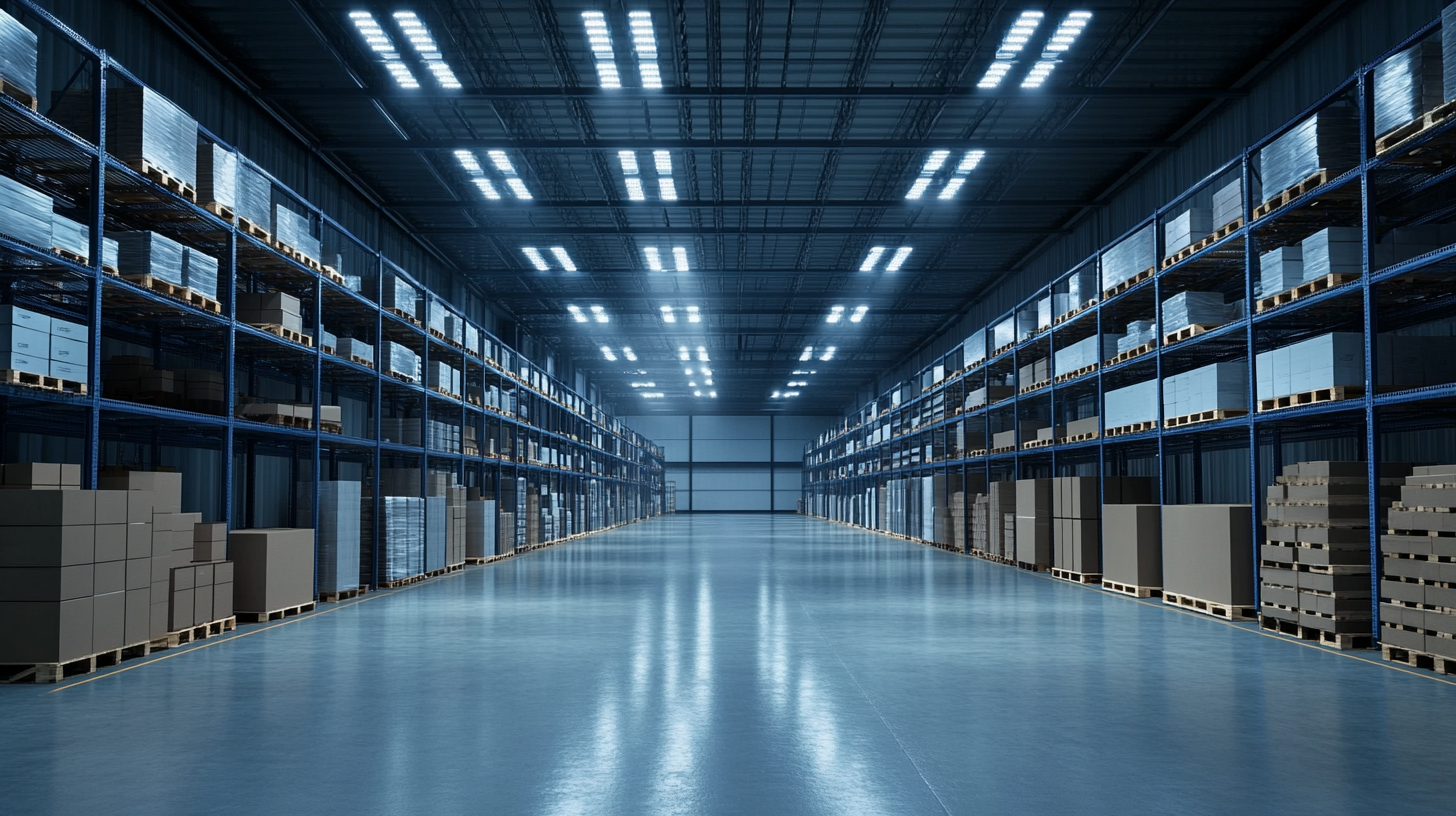Evaluating the Best LED Fixtures: A Comprehensive Guide for Global Buyers
In recent years, the demand for energy-efficient lighting solutions has surged globally, with LED fixtures emerging as the preferred choice for both residential and commercial applications. According to a report by the International Energy Agency (IEA), LED lighting is projected to account for 69% of the global light source market by 2023, showcasing a significant shift towards sustainability and energy conservation. This growing trend not only reflects consumers' increasing awareness of energy efficiency but also highlights the advantages that LED fixtures offer in terms of longevity, reduced energy consumption, and lower maintenance costs.
As buyers navigate the vast array of LED fixtures available on the market, understanding the key factors that contribute to their effectiveness is essential. A study conducted by the U.S. Department of Energy indicates that over 15% of electricity consumed in commercial buildings is used for lighting, emphasizing the critical role that LED technology can play in reducing overall energy expenditures. This comprehensive guide aims to evaluate the best LED fixtures by considering performance metrics, application suitability, and cost-effectiveness—empowering global buyers to make informed decisions while contributing to the broader goal of energy efficiency and sustainability.

Key Factors to Consider When Choosing LED Fixtures for Your Needs
When selecting LED fixtures for various applications, certain key factors must be carefully evaluated. First and foremost, brightness and color accuracy are critical components. The right luminance ensures visibility in different environments, while precise color rendering enhances the quality of visual output, making it essential for tasks ranging from professional presentations to everyday home use. Buyers should consider fixtures that offer adjustable brightness levels and various color temperature settings to meet specific needs. Another important consideration is energy efficiency. As the demand for sustainable solutions grows, LED fixtures provide a compelling option with their lower energy consumption compared to traditional lighting. Prospective buyers should look for products with high efficacy ratings, which indicate great performance with minimal energy use. This not only contributes to reduced electricity bills but also aligns with green building initiatives. Durability and maintenance requirements also play a pivotal role in selecting the right LED fixture. High-quality fixtures generally have longer lifespans and may come with warranties, reflecting their reliability in continuous use. Additionally, ease of installation and the complexity of maintenance tasks should be assessed to ensure that chosen fixtures integrate smoothly into existing systems. This consideration can lead to significant cost savings in the long run, both financially and operationally. Finally, the versatility of LED fixtures is a notable factor. The latest advancements in technology have led to the development of various designs tailored for specific settings, such as commercial, residential, or outdoor environments. Understanding the specific application can assist buyers in selecting fixtures that not only meet their lighting needs but also enhance the overall aesthetic of the space.

Types of LED Fixtures: A Breakdown of Options Available in the Market
When exploring the myriad options available in the LED fixtures market, it's essential to distinguish between the various types that cater to different needs and applications. LED fixtures can generally be categorized into several key types: recessed lighting, surface-mounted fixtures, pendant lights, and flood lights, each serving unique purposes in both residential and commercial settings.
Recessed lighting has gained popularity for its sleek, unobtrusive design, making it ideal for modern homes and businesses. According to a report by the American Lighting Association, recessed LED fixtures can achieve energy savings of up to 80% compared to traditional incandescent lighting, making them a cost-effective solution in the long term. Additionally, their versatility allows for a variety of light distributions, which can enhance the aesthetic appeal of any space.
Surface-mounted fixtures, on the other hand, are typically easier to install and offer a broad range of styles and functionalities. These fixtures are perfect for ceilings where traditional mounting isn’t feasible. The market for surface-mounted LED fixtures has been projected to grow at a CAGR of 12% from 2021 to 2026, driven by increasing demand in both residential and commercial sectors, as noted in a recent market analysis by Markets and Markets.
Pendant lights are also taking center stage, particularly in dining and kitchen areas, where they provide not only illumination but also a decorative focal point. Their designs are incredibly diverse, with options ranging from minimalist to ornate. Meanwhile, flood lights are gaining traction for outdoor usages, providing powerful illumination for security and landscaping purposes. The global outdoor LED lighting market is expected to reach USD 36.6 billion by 2025, as highlighted in a report by Research and Markets, emphasizing the shift towards energy-efficient outdoor lighting solutions.
By understanding the various types of LED fixtures, global buyers can make informed choices that align with their specific lighting needs and sustainability goals.

Energy Efficiency and Cost Savings: The Benefits of Upgrading to LED
Upgrading to LED lighting is not just an aesthetic choice; it’s a strategic decision driven by energy efficiency and substantial cost savings. Recent data from the U.S. Department of Energy indicates that LED lighting consumes up to 75% less energy than traditional incandescent bulbs while lasting 25 times longer. This remarkable reduction in energy consumption translates to significant financial savings for both residential and commercial applications. For instance, switching to LED fixtures can lower lighting energy costs by approximately 50% in commercial environments.
Beyond the immediate cost benefits, adoption of LED technology can contribute significantly to a greener planet. A study from the International Energy Agency forecasts that widespread adoption of LED lighting could reduce global electricity consumption for lighting by over 30% by 2030. This reduction not only translates to financial savings but also decreases greenhouse gas emissions. By opting for LED, buyers are not just making a smart investment; they are also playing a crucial role in enhancing sustainability within their communities.
Furthermore, the long lifespan of LED fixtures means less frequent replacements, further driving down overall maintenance costs. According to a report by Lighting Research Center, the life expectancy of high-quality LED products can exceed 50,000 hours, greatly outpacing traditional lighting options. The combination of lower energy costs, reduced maintenance, and a commitment to sustainability makes upgrading to LED lighting an attractive option for global buyers looking to maximize their investments while minimizing environmental impact.

How to Assess the Durability and Lifespan of LED Lighting Solutions
When it comes to selecting LED lighting solutions, understanding durability and lifespan is crucial for global buyers looking to make informed decisions. LED fixtures are often marketed for their energy efficiency and long operational life, but these claims can vary widely among different manufacturers. To truly assess the durability of an LED fixture, consider factors such as construction materials and the quality of components. High-quality LEDs are typically housed in robust enclosures that protect against environmental hazards, while inferior products may use cheaper materials that compromise longevity.
Another essential aspect to evaluate is the thermal management of the LED fixture. Heat dissipation is a critical factor affecting the lifespan of LED lights; excessive heat can lead to premature failure. Look for fixtures with efficient heat sinks and designs that promote airflow. Moreover, understanding the rating of the LED driver is important, as a poorly performing driver can dramatically reduce the overall lifespan of the lighting solution. Opting for fixtures that come with comprehensive warranty coverage can also provide peace of mind regarding durability.
Regular testing and certifications play a vital role in assessing the quality of LED lighting. Certifications from recognized standards, such as UL or DLC, ensure that the products meet industry benchmarks for performance and reliability. Additionally, reviews and testimonials from other users can provide insights into the real-world durability of particular models. By carefully evaluating these factors, buyers can select LED fixtures that promise not only longevity but also consistent performance throughout their lifespan.
Global Trends in LED Technology: What Buyers Should Know Before Purchasing
When considering the purchase of LED fixtures, it's essential for global buyers to stay attuned to current trends in LED technology. One of the significant trends is the increasing focus on energy efficiency and sustainability. LED lighting is celebrated not only for its lower energy consumption compared to traditional lighting but also for its longer lifespan. Buyers should look for products that comply with international energy efficiency standards, which can lead to substantial cost savings in both energy bills and replacement expenses.
Another critical aspect is the advancement in smart lighting technology. The integration of IoT (Internet of Things) features in LED products allows for increased control and customization. For instance, smart LEDs can be adjusted remotely, programmed to change brightness based on occupancy, or even controlled through mobile apps. This adaptability is preferable for both residential and commercial buyers who seek to enhance convenience while reducing overall energy usage.
Additionally, color temperature and quality of light are gaining importance among consumers. Different applications require specific color temperatures to create the desired ambiance and functionality. For instance, cooler temperatures are often favored in workspaces to boost productivity, while warmer tones are more suitable for residential settings to foster a cozy atmosphere. As such, buyers should familiarize themselves with the specifications of light quality to ensure that the fixtures they choose meet their specific needs and preferences.
Quality Commercial LED Lighting specializing in LED Tubes, LED Bulbs, LED Troffers, LED Door Kits, LED Retrofit Kits, LED Panels, LED Spot Lights, LED Wall Packs, LED Lamps, LED Drivers, LED Accessories, LED Lights, LED Sales, and LED Manufacturing. Headquartered in Atlanta, Georgia, USA.

